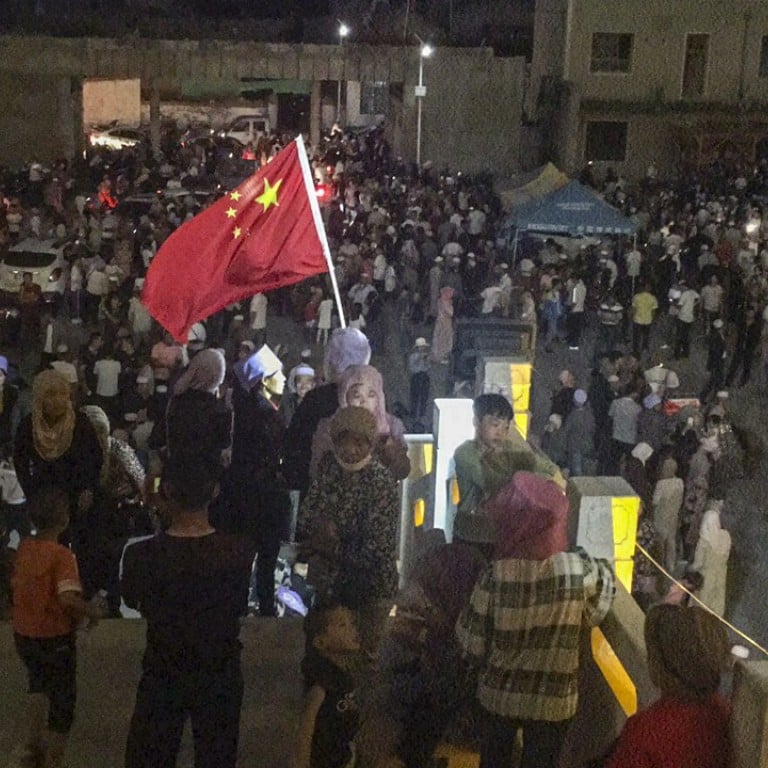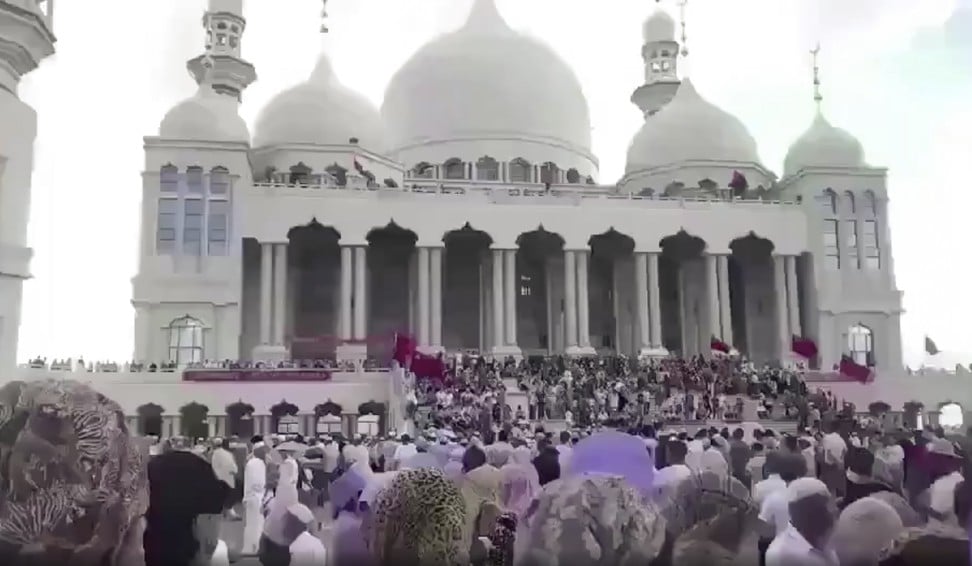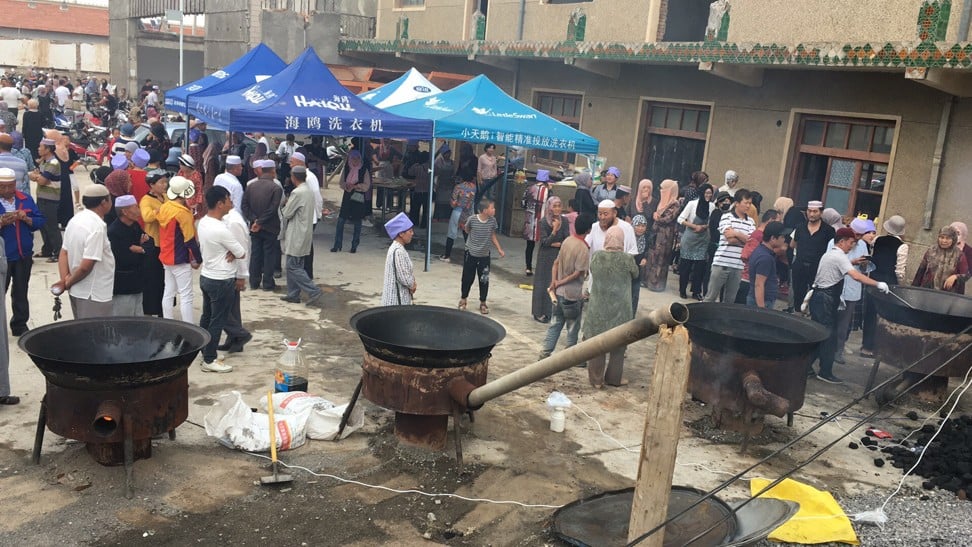
Protest by Chinese Hui Muslims at Weizhou Grand Mosque goes on as sides seek compromise
Government’s ‘rectification plan’ to make holy building more Chinese fails to impress devotees
Thousands of ethnic Hui Muslims extended their protest at a new mosque in northwest China into Friday night, after the local government halted its plan to demolish the building but insisted on remodelling it to make it less Arabic in style.
The gathering at the Weizhou Grand Mosque, which started on Thursday, is by far the most daring resistance in the Ningxia Hui autonomous region against a sweeping government push to “Sinicise Islam”.
Protest forces authorities to halt plan to demolish Weizhou Grand Mosque
At Friday prayer – the most important service of the week – the two floors of the prayer hall were filled with thousands of worshippers. Many had come from outside Weizhou – and some from outside Ningxia – to show their support for the local community, according to two people who attended the service.
Led by the imam, the congregation prayed for Allah to “solidify our faith and protect the mosque”, one said.
With its onion-shaped domes, crescent moons and towering minarets, the all-white mosque is the latest structure to come into the cross hairs of a campaign to rid Ningxia of what the government sees as creeping Islamisation and Arabisation.
After Islamic icons and Arabic signs were removed from secular buildings across the region, the campaign has increasingly targeted religious buildings. The domes of several smaller mosques have been removed in recent months.
Is China’s atheist Communist Party trying to eradicate Islam?
The Weizhou town government in Tongxin county had originally demanded that the mosque, which was completed only last year, be torn down by Friday, saying it had not been granted the necessary planning and construction permits.
The order sparked a huge uproar, and prompted officials to change the demolition order to a “rectification plan”.
The first version of that plan called for the mosque’s “Arab style” domes to be replaced with traditional Chinese-style pagodas, but was swiftly rejected by worshippers. The government then asked the mosque’s management committee to remove eight of the nine domes that top the mosque, leaving the largest one in the centre.
That, too, was deemed unacceptable by most members of the community.
“After taking down the domes, the mosque can no longer be an icon of Islam,” said a local man who declined to give his name. “Changing it to a traditional Chinese style is as incongruous as putting the mouth of a horse on the head of an ox.”
As of Friday night, the two sides had yet to reach a compromise.
How China is trying to impose Islam with Chinese characteristics in the Hui Muslim heartland
For decades the Hui people have enjoyed relative freedom to practice their faith. But the government’s heavy-handed crackdown on Islam in Xinjiang – the heartland of the mostly Muslim Uygur ethnic group – has recently spilled over into Hui strongholds, including Gansu province, which borders Xinjiang, and Ningxia.
The head of Tongxin county visited protesters – some of whom have been staging a sit-in inside the mosque – about midnight on Thursday and urged everyone to go home.
He said that the “rectification” had to go ahead, but promised that the government would continue to negotiate with the mosque’s management committee until a solution acceptable to everyone was found.
Want to escape poverty? Replace pictures of Jesus with Xi Jinping, Christian villagers urged
The protesters refused to leave, however, and the appearance of large cooking stoves and large supplies of food and water on Friday evening suggested many of them were in for the long haul.
“The officials have not given us a clear answer,” one member of the crowd said. “And we plan to carry on until the government makes it clear that it won’t make any changes to the mosque.”
When the South China Morning Post called the Tongxin branch of the state-backed Islamic Association on Friday for a comment, the person who answered immediately put down the phone. The county government could not be reached for comment.
The new mosque replaced an earlier one that, in turn, had been built to replace Weizhou’s 600-year-old Chinese-style mosque, which was destroyed during the Cultural Revolution along with thousands of other temples, churches and monasteries across the country.
In Ningxia and Gansu, most of the mosques from the Qing, Ming and earlier dynasties, which resembled traditional Chinese temples, were destroyed during the decade-long sociopolitical movement initiated by China’s then-paramount leader Mao Zedong.
Christian heartland on front lines of China’s campaign of religious suppression
David Stroup, an expert on Hui Muslims at the University of Oklahoma in the United States, visited Weizhou in 2016 and said that the Grand Mosque was “the pride of the community” even when still under construction.
“When I talked to people, they beamed with pride … For them, it was the perfect example of the way that Islamic communities could work hand in glove with the state,” he wrote in a blog post, after learning about the protest in Weizhou.
“If the party-state regime persists in antagonising people like those in Weizhou, it risks isolating those who think of themselves as both Chinese patriots and loyal Muslims. It’s a group it can’t afford to lose.”





